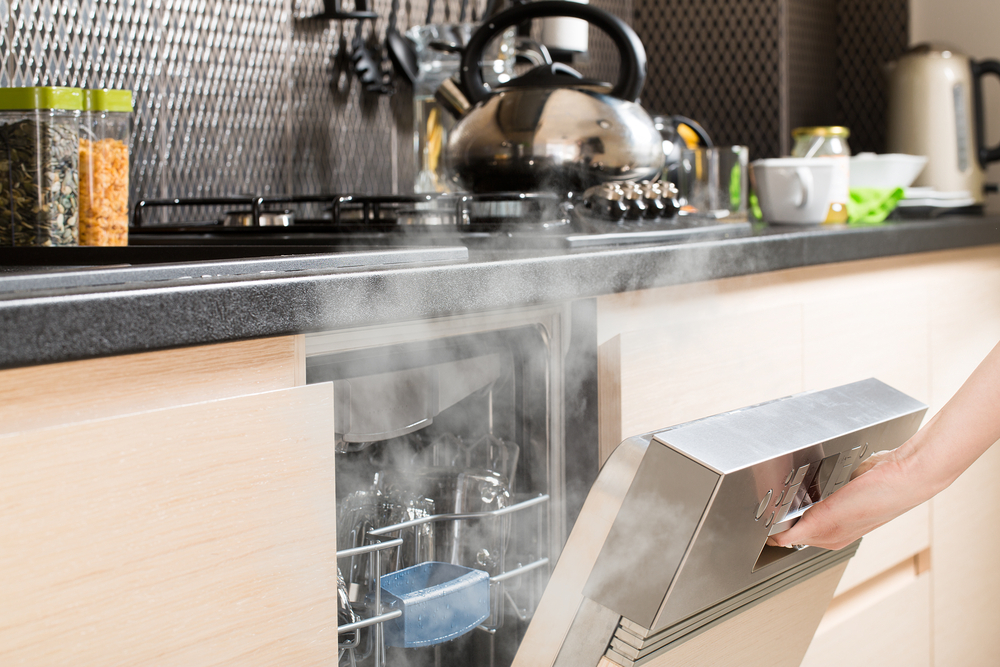Buying and Upgrading Dishwashers in 2018
By definition, a dishwasher is a mechanical device that is used for cleaning dishes and cutlery. The act of manually washing dishes involves a lot of physical scrubbing and rinsing to remove the dirt, grease, and food remnants on the dishes. On the other hand, an automated dishwasher cleans the dishes by spraying hot water, that is generally of the temperature range 45°- 75°C. The temperature can be altered, based on the level of the delicacy on the dishes and glassware.

Workings of a dishwasher
The basic principle behind the mechanical device’s workings is automation of the physical act. A mixture of water at the set temperature is mixed with the detergent and pumped into one or more numbers of the spraying arms, blasting the dirty dishes. This step is called washing. Once the above step is complete, the water is drained. More hot water then fills the cistern to rinse the washed dishes. This is called the rinse cycle. After being rinsed, the dishes are dried using any one of the many drying methods. In most cases, a rinse-aid, which is a chemical–based substance, is used to reduce the surface tension of the warm water.
Types of dishwashers
Domestic dishwashers
These are designed for usage in a domestic household. Standard units that are installed in the kitchen cabinets have dimensions around 18 and 24 inches. These have countertops attached to them to easily fit into the kitchen. Domestic units come in standard and tall tub designs. The only difference between the two is the capacity. The tall tub units have 20% extra in comparison to the standard units.
Commercial dishwashers
These are specially designed to use in restaurants or hotels. Washing occurs with higher temperatures between 65 and 71°C. The large-scale cleanliness is achieved by using a booster heater or through a chemical sanitizer. Although dishwashers might not be an absolute necessity in the household, they have become a part and parcel of the lives here, in our country. The latest range of machines launched, promise spotless plates, glasses and silverware, by using less energy and water.
If you are looking to purchase a new one this year or upgrade your old unit, we have a shortlisted the best dishwashers for you:
KitchenAid Architect Series II Top Control Dishwasher
This energy-star top control device features a self-cleaning filter that simultaneously breaks down food particles in the washing water without making much noise. This means less soaking and pre-rinsing for you! This is one of the best dishwashers in the market.
Maytag Front Control Dishwasher
This machine has been titled the best front control dishwasher. It features the most powerful motor in the market that ensures that your dishes are trusted. It houses a built-in 4 blade stainless steel chopper that breaks down food particles stuck on to your dishes and silverware. This is one of the best dishwashers in the market.
Whirlpool Tall Tub
If you are looking at purchasing a machine with a reliable third level rack, then look no more. Whirlpool’s latest is here to your rescue. This unit boasts of 37% more space compared to the average dishwasher without compromising on the latest features. This is one of the best dishwashers in the market.
Frigidaire 55-Decibel Built-In Dishwasher
Many kitchens do not have space for a 24-inch dishwasher. This device can be installed in a space no more than 18 inches! Moreover, it offers six different wash cycles – heavy, normal, light, china crystal, energy saver and rinse. Most people do not consider using their dishwasher for their valuable china sets, but you can blindly trust this one. This is one of the best dishwashers in the market.
In the end, it boils down to your personal preference. You need to understand the needs of your household. The one thing you need to be absolutely sure about is that after fitting the unit, you have enough space to open and load your dishes in. So make sure you measure your kitchen space carefully before purchasing. Expect to spend anywhere from $400 up to $1,500 if you want the latest model with all the bells and whistles.